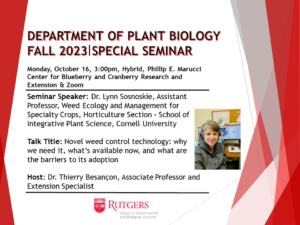Department of Plant Biology – Fall 2023 Special Seminar

Please, contact Dr. Thierry Besançon if you plan to attend it in-person at the Rutgers P.E. Marucci Center (space limited) or if you want to receive the zoom link for attending the seminar online.
